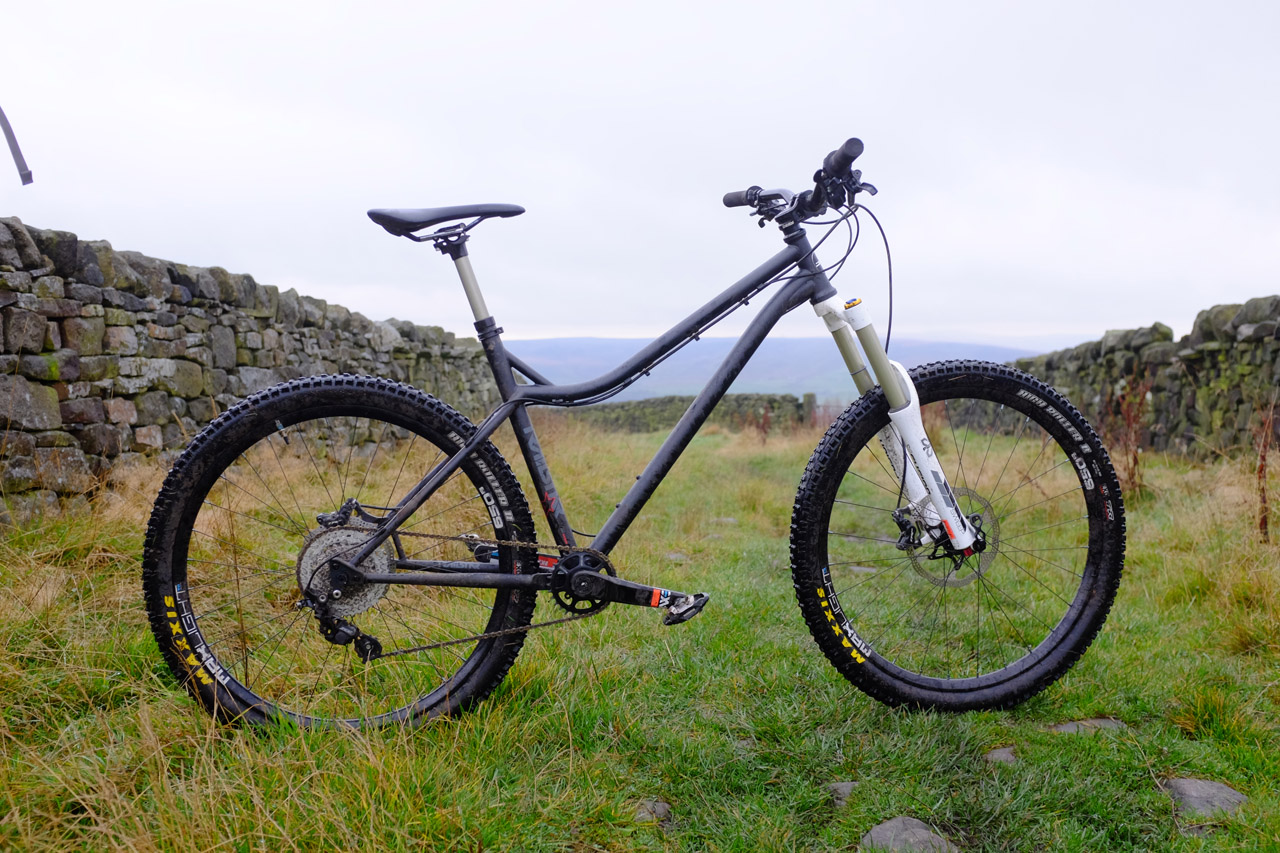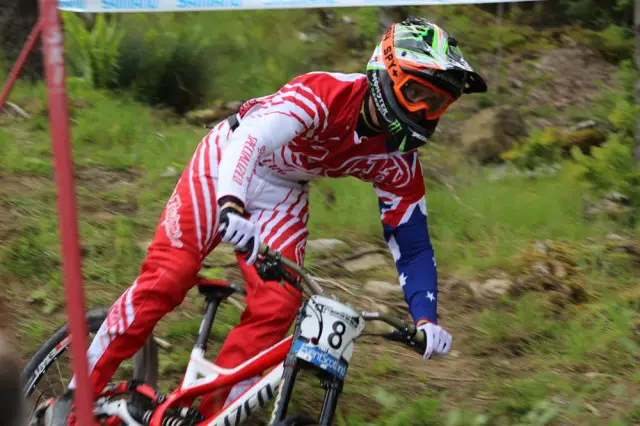

The large frame they sent didn’t seem particularly enormous; with a short stem holding 785mm bars, it was too small for Barney and got passed to me. The 150mm dropper sent with it made the climbing position about a centimetre too tall for me, but apart from that, for general riding this setup felt fine (I’m 171cm tall with an 81cm inside leg, stat fans). If I could jump properly, I might go for a shorter frame.
It’s nice and slack with a 66 degree head angle, and geometry suited to a 150mm fork. The stays offer enormous mud clearance, with capacity for tyres up to 2.8 and rims up to 50mm if you really want to go that big (We tested it with 2.4 High Roller II’s). The junction of seat- and chainstay is reassuringly stout, with reinforcement on the brake side, and removable dropouts held on by pairs of chainring bolts (unlike this reviewer, make sure to double check them and apply threadlock before your first ride).
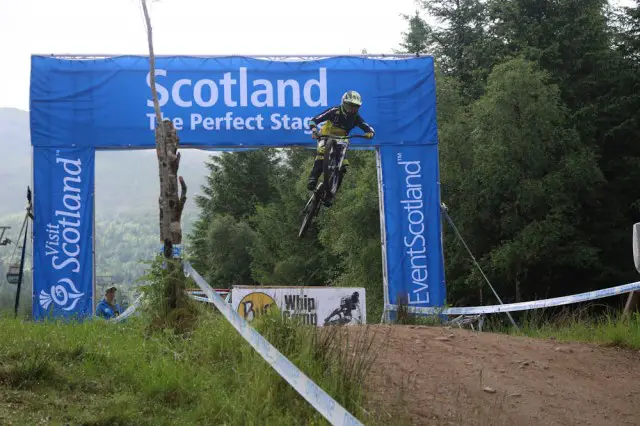
Going by the reactions of other riders, the bendy toptube is aesthetically divisive for sure, but gives it a low standover and, even on the large frame, really lets you get your knee over it cornering. Rather than 44mm, the headtube is tapered, which framebuilders tend to avoid in steel because they think it looks weird next to otherwise skinny tubes. The gusset beneath the downtube cleverly disguises some of the taper and stops it looking so spindly. From the front, the headtube is a beautiful looking piece of work.
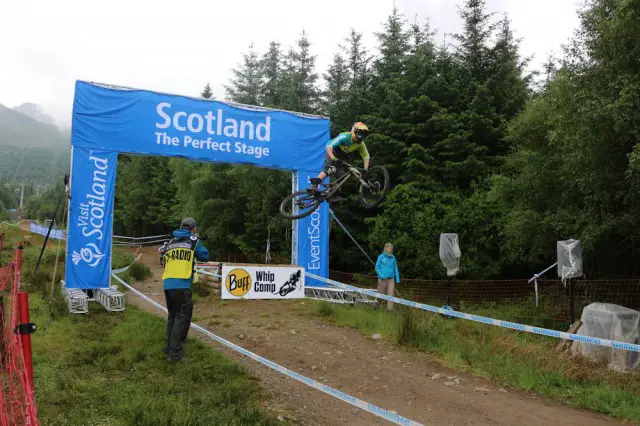
For the first week, I took the bike out in the woods around Hebden Bridge, where it felt perfectly at home and stable, excelling on the steeper descents. Likewise, on twitchy moorland singletrack, I found I could stay off the brakes and tweak it round tight corners with ease. Unusually for me, and despite the bottom bracket not feeling high, even with 175mm cranks I just didn’t pedal strike at all on this bike. All quite confidence inspiring.
The only hitch was when I got onto some Calderdale pack horse trail, flatting within the first fifty metres, then pumping the tube in the back tyre up to 40PSI to withstand it. If you’ve not ridden any of this kind of trail, imagine mile upon mile of square edged gritstone bumps spaced a foot apart and you’re getting the idea. Understandably, the handling became a lot more skittish with the back that hard, but it was that, flat, or crawl.
Looking at the bike, I didn’t expect it to be wonderful at climbing, but the front wandered much less than I thought it would. Calderdale is renowned for its steepness, and I’m not über-fit, but with a 30 tooth chainring up front and a 40 tooth sprocket at the back, it cleaned nearly everything I took it up round here. The only thing it struggled with was The Buttress in Hebden Bridge, but that’s a given for most bikes [and people – Ed].
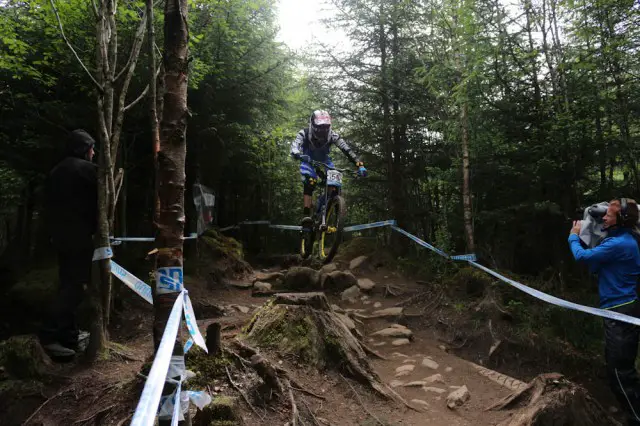

The Trailstar isn’t the machine I’d pack for a lakeland epic or a century, but I really enjoyed the weeks I spent with it. There isn’t much I’d change about the setup Upgrade Bikes gave us: more powerful brakes than the TRP Slates they put on, perhaps. Bringing back a beloved classic for modern componentry was never going to be an easy job, and a few tiny bits of the internet have been aflame over it not being identical to the old frame, but DMR have built a nice, progressive steel hardtail that can take a lot of your old bits while accommodating new standards and/or niches. It’s more capable than you might think, and it’s a lot of fun.
…
Review Info
| Brand: | DMR |
| Product: | Trailstar |
| From: | DMR |
| Price: | £499 Frame only |
| Tested: | by David Hayward for |
